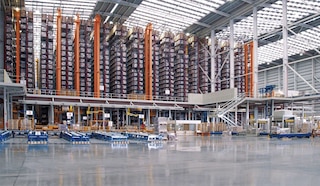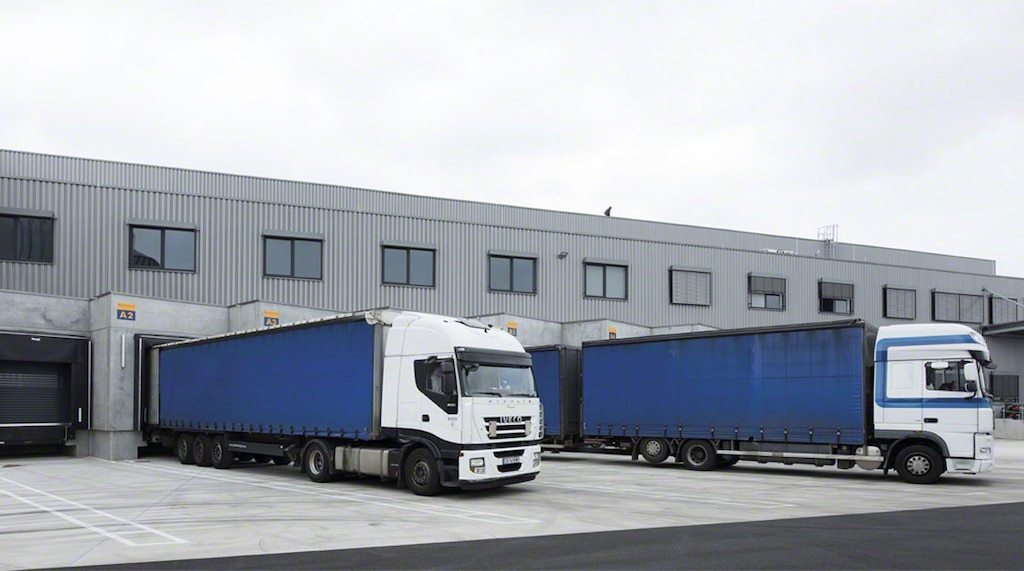
Types of logistics in the supply chain
Although logistics is often referred to as a whole, we can actually differentiate between various types of logistics according to the stage the products are in at a given time. Logistics can be understood as the set of phases involved from a product’s manufacture to its consumption by the end customer.
For starters, we need to distinguish between operations performed in the warehouse (storage, procurement, etc.), known as intralogistics, and tasks fulfilled outside the installation (transportation, order delivery, etc.), or external logistics.
But beyond this initial separation, it’s also necessary to recognize four basic types of logistics that take place in the supply chain: procurement, production, distribution, and everything relating to after-sales service. We’ll break them down in this post.
Procurement logistics
Procurement logistics is responsible for managing supplies required for the manufacture and sale of finished products, semi-finished goods, and raw materials.
Companies have three methods for managing procurement logistics:
- Just-in-time: the necessary materials are received when required to complete the production process, not ahead of time. This does away with the need to store them.
- Synced with production: supply planning is done with the aim of anticipating manufacturing needs. This way, you know in advance when and how much merchandise will be received and whether it will be temporarily stored.
- Safety stock: this consists of storing more goods than those you actually need for production to mitigate any unforeseen circumstances (changes in demand, supplier delays, etc.).
To ensure efficient procurement logistics, it’s crucial to consider a series of variables, namely: the selection of suppliers, the exact amount of stock ordered and frequency of procurement, the inventory management model applied, and the load unit(s) used to store, handle, and transport the products.
Manufacturing logistics
Industrial or manufacturing logistics includes and optimizes all processes taking place from the purchase of raw materials to the creation of the final product.
These are the two most common production strategies:
- Make to stock, or the push system: goods are manufactured ahead of time and subsequently stored in the warehouse. The sales department only sells the available merchandise.
- Make to order, or the pull system: The product is manufactured once the order is received from the customer.
The main objective of industrial logistics is to reduce manufacturing lead time, that is, the amount of time it takes from the moment a production order is generated until the product is finished.

Distribution logistics
Also known as transport logistics, distribution logistics is charged with ensuring that products or goods reach customers quickly and efficiently. There’s no point in offering an attractive, functional, and affordable product if you can’t guarantee that the customer will receive it in the agreed-upon time, condition, and quantity.
Distribution logistics can be:
- Direct: the manufacturer is charged with distributing the product directly to end consumers.
- Indirect: as opposed to end customers, the merchandise is sent to other wholesalers or to retailers (who sell to end consumers).
Distribution logistics intervenes right after the product has been manufactured, encompassing transportation, storage, order preparation, and delivery to the customer.

Reverse logistics
The set of practices and processes connected with managing product returns and refunds is known as reverse logistics. Reverse logistics can be classified as:
- Returns logistics: the most common type, this has grown the most because of e-commerce. It deals with returned orders sent back to distribution centers.
- Waste logistics: this has to do with the recycling, treatment, and recovery of waste in order to take advantage of it or eliminate it to prevent environmental damage.
The activities necessary for implementing efficient reverse logistics are essentially the same as those involved in all types of logistics operations. Nevertheless, the main difference is that they need to be properly planned to keep reverse logistics from interfering in other warehouse operations.
Different kinds of logistics strategies
The four types of logistics phases are often confused with the various practices each company can adopt to employ a comprehensive business approach. In this sense, we can highlight the following logistics strategies:
Green logistics. Also called environmental or sustainable logistics, green logistics ensures that sustainable activities are carried out and that the environmental footprint is reduced.
Integrated logistics. In integrated logistics, all the business’s activities and departments are coordinated for the purpose of delivering orders with the utmost effectiveness.
Omnichannel logistics. This encompasses the practices adopted by a company to tailor its installation to meet new digital consumer needs (the fact that a product can be purchased online and returned in-store, for example). In omnichannel logistics, warehouses manage large volumes of daily orders containing few units and work with very tight time frames.
Logistics 4.0. This concerns the commitment to automate and digitize all logistics operations. The Logistics 4.0 concept not only includes automated systems, but also fosters the automated management of warehouses through interconnectivity, information digitization, and the use of cloud-based IT apps.
Defining the logistics strategy/strategies to adopt to achieve specific targets calls for well-structured logistics planning that’s agreed upon by all stakeholders.

Objective: efficient logistics
Firsthand knowledge of the various logistics varieties and strategies will help you to adapt to new trends brought about by social changes and technology advances. Omnichannel retail, same-day deliveries, and the e-commerce boom are just some of the challenges the different types of logistics fields have to tackle to meet each company’s goals.
For decades, Interlake Mecalux has provided all-in-one storage solutions tailored to all kinds of logistics needs, ranging from traditional and automated storage systems to warehouse management tools, such as Easy WMS. It’s never too late to begin optimizing your logistics processes, so get in touch; we’d be happy to give you advice on getting the most out of your installation.
